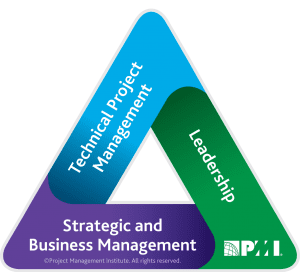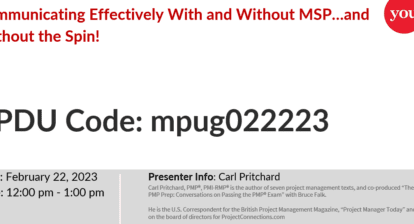The Project Management Institute (PMI®) has officially released the Project Management Body of Knowledge (PMBOK®) Guide Sixth Edition – electronic copies are available, printed copies are coming, and the PMP® exam will change on March 26, 2018. But, what does it all mean?
What can we expect to see and what changes mean the most to us as project managers? Well, we’ve done some analysis and provided a summary of everything you want to know about the Sixth Edition, but were afraid to ask!
Bolder and More Lively Than Ever

With this release, Agile and Knowledge Management play a significant role in project management and the respective knowledge areas. The Project Manager (PM) has earned the role as the key integrator – the one who understands the Talent Triangle for all (Agile) project management work. This makes sense since the PM is the one responsible for the work.
The Sixth Edition now clarifies the difference between when to monitor and when to control. For instance, you cannot control all communications, but you can certainly monitor them. You can control a risk with an effective work around or mitigation/response strategy, but you still need to monitor the risk.
What’s in a Name
Yes, there are name changes as well. PMI acknowledges resources are not just a human factor; they can be material, publications, presentations, and inventory, to name a few. PMI did a wonderful job of refocusing how you “manage” a team and project lifecycle through resource management via estimating and acquiring resources to develop, manage, and control resources.
As PMs, we always ask ourselves, are we managing time or are we managing a schedule? You got it. We manage to a schedule, so Schedule Management replaces Time Management!
Did I mention Agile?
Yes, PMI now recognizes the value of Agile methodologies as part of the Develop Schedule process of Schedule Management and should always be a consideration as you plan to develop deliverables or end results.
Now the Fun Part…Project Management Rules
PMI said it; there are rules a PM must follow. The application of these rules are a result of PMBOK best practices and they make sense!
We all are aware how it might be tough to wrap our minds around the inputs and outputs, but now, the PMBOK includes clarifying fundamental rules. An input is a document key to the process and an output is an input to another process. This change better explains the funky flow diagrams. Product Documents are an output first, before they can be an input to another process.
But wait, I’m not done. We have to sequence these inputs and outputs. An input should always be first and the Enterprise Environmental Factors and Organizational Process Assets are always last, as they relate to outputs – not that they aren’t important. They are extremely relevant to updates to support appropriate documentation and affirmation.

And finally, recognition that the Project Management Plan is the mother of all plans and all knowledge area plans are subsidiaries of the Project Management Plan.
And we can’t forget about tools and techniques, can we? It’s what makes ITTOs (inputs, tools, techniques, and outputs) complete. Our tools and techniques now have rules – six of them to be exact, as follows:
- Data Gathering (9 Characteristics)
- Data Analysis (27 Characteristics)
- Data Representation (15 Characteristics)
- Decision Making (2 Characteristics)
- Communication Skills (2 Characteristics)
- Interpersonal Skills (17 Characteristics)
Going into each is a blog of its own, but PMI did a great job categorizing these rules as they apply to each knowledge area.
Overall, major kudos to PMI! I challenge my readers to take the time to understand each rule and all the changes encompassed in the new PMBOK® Guide. It makes sense and incorporates the changing world of project management. I’m proud to be a PMP, and as PMs, we are all accountable to understand best practices for managing projects.
Article originally published on the Edwards Performance Solutions blog. Used with permission.
Eric W. Perlstein, PMP, PMI-ACP/RMP, serves as Edwards’ Director, Healthcare Programs and has an extensive history with PMI, including Board Member, PMI Baltimore Chapter 2006-2016 and 2013 PMI Leader of the Year Recipient.
Related Content
Webinars (watch for free now!):
The PMO Lifecycle – The Balanced PMO
The Do’s and Don’ts of Project
Articles:
4 Secret Ingredients to Pass the CAPM Exam
The Balanced PMO – Moving beyond the Iron Triangle
PMI’s Talent Triangle: Making Gurus into Leaders





